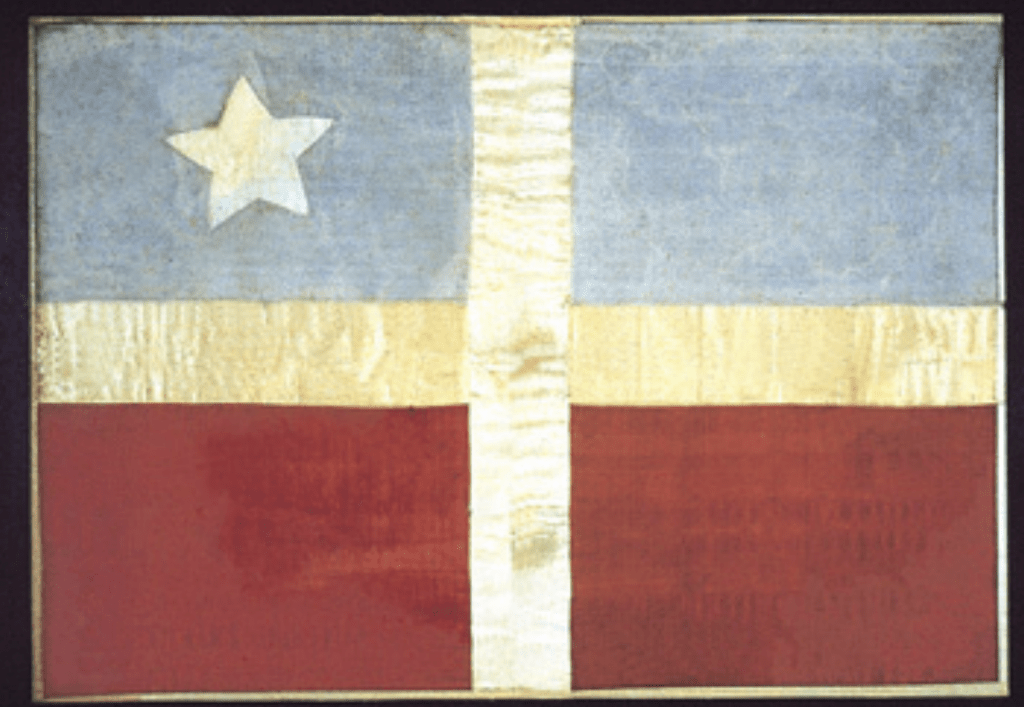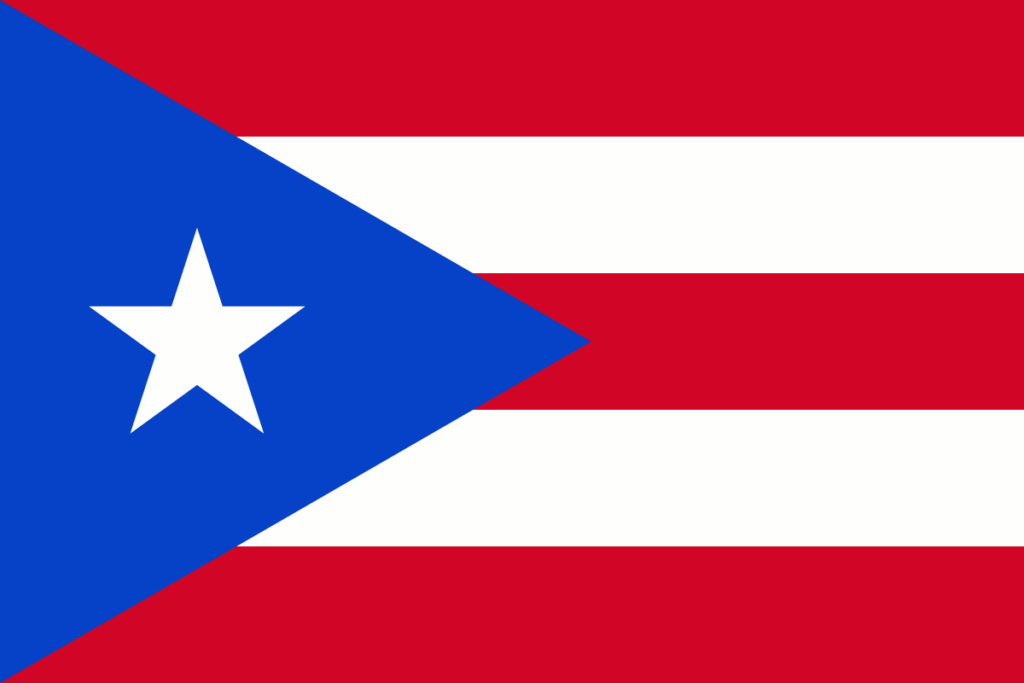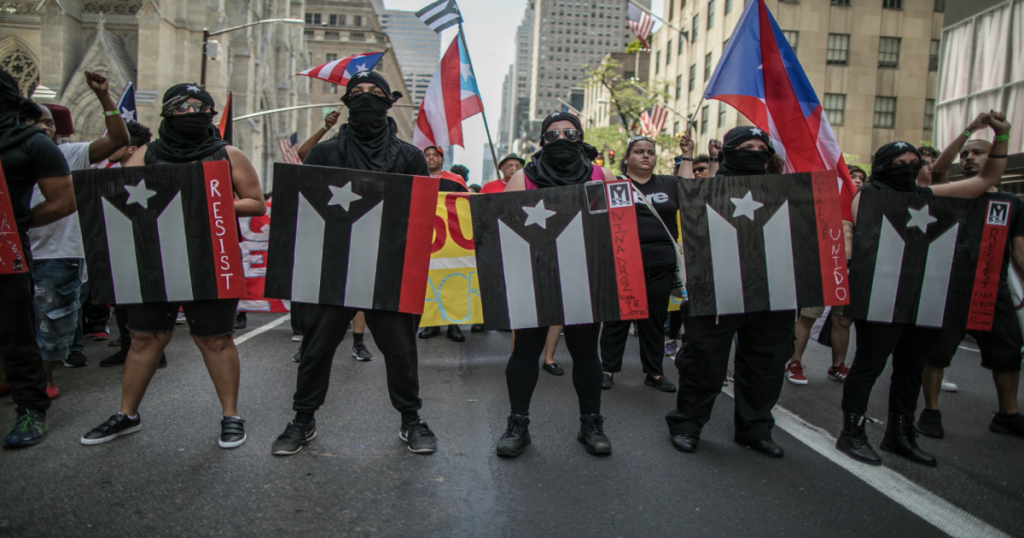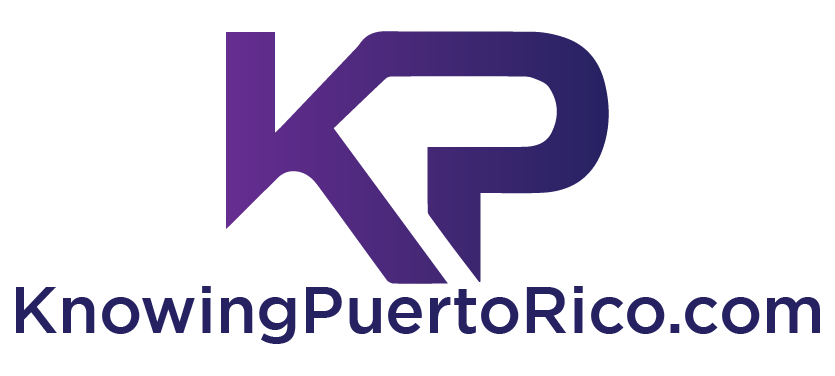Every country’s flag represents and symbolizes its people, and the Puerto Rico flag is no different. In Spanish, it’s called Bandera de Puerto Rico.
Puerto Rico can be located in the North American continent. It is a Caribbean islet and unincorporated U.S. home with the geography of mountains, falls, and the El Yunque tropical rainforest. In San Juan, the capital and largest megacity, the Isla Verde area is known for its hostel strip, sand bars, and pavilions. Its Old San Juan neighbourhood features various Spanish social structures and El Morro and La Fortaleza, massive, centuries-old citadels.
The Land
Puerto Rico is composed of mountainous and hilly landscapes, with almost one-fourth of the island covered by steep slopes. The mountains are the easternmost extension of a tightly folded and faulted ridge that extends from the Central American mainland throughout the northern Caribbean to the Lesser Antilles. Although Puerto Rican alleviation is exceptionally low through continental standards, the island sits much less than a hundred miles (one hundred sixty km) south of a precipitous melancholy in Earth’s crust. An in-depth submarine function is referred to as the Puerto Rico Trench, which descends to extra than five miles (eight km) underneath sea level—the Atlantic’s innermost point—at a domain northeast of the Dominican Republic. Powerful tectonic forces over tens of thousands and thousands of years have created those capabilities nevertheless, on occasion, cause earthquakes in Puerto Rico.
The Flag
The present-day flag of Puerto Rico originates from the one accepted by the Commonwealth of Puerto Rico in 1952 and maybe traced to 1868. While the primarily Puerto Rican flag, “The Revolutionary Flag of Lares,” was conceived using Dr. Ramón Emeterio Betances and embroidered with the help of using Mariana “Brazos de Oro” Bracetti. This flag was used in the short-lived Puerto Rican rebellion in opposition to Spanish rule on the islet, acknowledged as “El Grito de Lares,” setting up a Puerto Rican countrywide recognition under colonial law for the primary time.
Juan de Mata Terreforte, an exiled veteran of “El Grito de Lares” and vice-president of the Puerto Rican Revolutionary Committee in New York City, accepted with its participants the flag of Lares because the flag of Puerto Rico, till 1895, turned into unveiled and followed through the committee. The new flag, which consisted of 5 same horizontal bands of purple (pinnacle and bottom) alternating with white; a blue isosceles triangle primarily based totally at the hoist facet bears a large, white, 5-pointed star in the center, turned into the first flown in Puerto Rico on March 24, 1897. This was for the duration of the “Intention de Yauco” revolt. (This is contrasted by using three blue and white same horizontal stripes and a purple equilateral triangle on the hoist with a 5-pointed star in the Cuban flag.) The use and show of the Puerto Rican flag turned outlawed, and the best flags authorized to be flown in Puerto Rico were the Spanish flag (1492 to 1898) and the American flag (1898 to 1952).
In 1952, the Commonwealth of Puerto Rico followed the 1895 flag layout as its licensed standard. The shade of the triangle that was utilized by the management of Luis Muñoz Marín became dark blue to suit the blue of the USA flag. In 1995, the authorities of Puerto Rico issued a law concerning using the Puerto Rican flag titled: “Regulation at the Use withinside the Commonwealth of Puerto Rico of the Flag of Puerto Rico” (Spanish: “Reglamento sobre el Uso en Puerto Rico de los angeles Bandera del Estado Libre Asociado de Puerto Rico”), wherein the authorities specifies the colors for use however does now no longer specify any reputable shade tones or sun sunglasses. Therefore, it isn’t always unusual to peer at the flag of Puerto Rico with one-of-a-kind sun sunglasses of blue displayed withinside the commonwealth.
The era of the Spanish
When Christopher Columbus arrived on the island’s shore, he used the flag delegated to him by the Spanish Crown asserted, which he named “San Juan Bautista,” for the sake of Spain to represent Puerto Rico.
Columbus wrote in his logbook that on October 12, 1492, he utilized the Royal Flag and that his skippers utilized two banners which the Admiral conveyed in every one of the boats as an ensign, each white with a green cross in the center and an ‘F’ and ‘Y,’ both green and delegated with brilliant, open imperial crowns, for Ferdinand II of Aragon and Ysabel (Isabel I).
The conquistadores under the order of Juan Ponce de León continued to conquer and settle the island. They conveyed as their tactical standard the “Spanish Expedition Flag.” After the island was vanquished and colonized, the Spanish flag was utilized in Puerto Rico, the same as it was applied in its different states in general.
When the Spanish military set up a good foundation for themselves on the island, they started the development of military strongholds, for example, La Fortaleza, Fort San Felipe del Morro, Fort San Cristóbal, and San Gerónimo. The Spanish Army planned the “Cross of Burgundy Flag” and took on it as their norm. This banner flew anywhere there was a Spanish army base.
First aboriginal design

The freedom development in Puerto Rico picked up speed with the freedom achievements of Simón Bolívar and José de San Martín in South America. In 1868, nearby freedom pioneer Ramón Emeterio Betances encouraged Mariana Bracetti to weave a progressive flag involving the flag of the Dominican Republic, for instance, advancing the then well-known ideal of joining the three Caribbean islands into an Antillean Confederation. The materials for the flag were given by Eduvigis Beauchamp Sterling, named Treasurer of the transformation by Betances. The flag was partitioned in the center by a white Latin cross, the two lower corners were red, and the two upper corners were blue, with a white star in the upper left blue corner. As indicated by Puerto Rican writer Luis Lloréns Torres, the white cross on it represents the longing for country recovery; the red squares, the blood poured by the legends of the disobedience, and the white star in the blue isolation square, represents freedom and freedom. The “Progressive Flag of Lares” was utilized in the brief resistance to Spain in what became known as El Grito de Lares (The Cry of Lares). The flag was broadcasted the public flag of the “Republic of Puerto Rico” by Francisco Ramírez Medina, who was confirmed as Puerto Rico’s first president and put on the high special stepped area of the Catholic Church of Lares, in this manner turning into the principal Puerto Rican Flag. The first Lares flag was taken by Spanish armed forces officials as a conflict prize. Numerous years after the fact, it was returned and moved to the Puerto Rican individuals. It is currently displayed in the University of Puerto Rico’s Museum.
Lares progressive flag of 1868, otherwise called the “Principal Puerto Rican Flag” in Puerto Rico.
In 1873, following the abandonment of Amadeo I of Spain and with Spain’s change from Kingdom to Republic, the Spanish government provided another pioneer flag for Puerto Rico. The new flag, which was utilized until 1873, looked like the flag of Spain, with the distinction that it had the emblem of Puerto Rico in the center. Yet again, Spain’s flag flew over Puerto Rico with the reclamation of the Spanish realm in 1874 until 1898, the year that the island turned into ownership of the United States under the particulars of the Treaty of Paris (1898) in the outcome of the Spanish-American War.
The Current Design of Puerto Rico Flag
Some sources document Francisco Gonzalo Marín presenting a Puerto Rican flag prototype in 1895 for adoption by the Puerto Rican Revolutionary Committee in New York City. Marín has since been acknowledged by some for the flag’s design. There is a letter written by Juan de Mata Terreforte which gives credit to Marin. The original contents of the letter in Spanish are the following:
“La adopción de la bandera cubana con los colores invertidos me fue sugerida por el insigne patriota Francisco Gonzalo Marín en una carta que me escribió desde Jamaica. Yo hice la proposición a los patriotas puertorriqueños que asistieron al mitin de Chimney Hall y fue aprobada unánimemente.”
Which translated into English states the accompanying:
“The adoption of the Cuban flag with transformed colors was proposed to me by the recognized patriot Francisco Gonzalo Marín in a letter he kept in touch with me from Jamaica. I made the proposal to the Puerto Rican patriots who attended the meeting at Chimney Hall and it was approved unanimously.”
As indicated by different records on June 12, 1892, questioned by researcher Armando Martí, Antonio Vélez Alvarado was at his condo at 219 Twenty-Third Street in Manhattan when he gazed at a Cuban banner for a couple of moments and afterward investigated the clear divider in which it was being shown. Vélez unexpectedly saw an optical deception, in which he saw the picture of the Cuban flag with the tones in the flag triangle and stripes rearranged. Very quickly, he visited a close-by vendor, Domingo Peraza, from whom he got some crepe paper to fabricate an unrefined model. He later showed his model in a supper meeting at his neighbor’s home, where the proprietor, Micaela Dalmau de Carreras, had welcomed José Martí as a visitor. Martí was agreeably dazzled by the model and made a note of it in a paper article in the Cuban progressive paper Patria, distributed on July 2 of that year. Acknowledgment of the model was delayed in coming yet developed with time. Francisco Gonzalo Marín, who chose to have an appropriate banner sewn in light of the model, introduced the new banner’s plan in New York’s “Chimney stack Corner Hall,” a get-together spot of freedom advocates two years after the fact. The Puerto Rican Flag (with the light blue triangle) before long came to represent the standards of the Puerto Rican autonomy development.
The banner of Puerto Rico, whose plan addresses the ongoing banner, was flown without precedent for Puerto Rico by Fidel Vélez and his men during the “Intentona de Yauco” revolt.
Puerto Rican banner (Dimensions: 2:3, red and white stripes and blue isosceles triangle with white star)
Cuban banner (Dimensions: 1:2, blue and white stripes and red isosceles triangle with white star)
Maria Manuela (Mima) Besosa, the daughter of the Puerto Rican Revolutionary Committee member Manuel Besosa, wrote a letter in which she indicated that she sewed the flag. This created the impression that her father might be the one who designed the flag. The flag consists of five stripes that alternate from red to white. Three of the stripes are red, and the other two are white. To the left of the flag is a light blue triangle that houses one white five-pointed star. Each part of this flag has its own meaning. The three red stripes represent the blood of the brave warriors. The two white stripes represent the victory and peace that they would have after gaining independence. The white star represented the island of Puerto Rico. The blue represents the sky and blue coastal waters. The blue represents the sky and blue coastal waters. The triangle represents the three branches of government.
It is also believed that Lola Rodríguez de Tió suggested they use the Cuban flag with its colors reversed as the model for their own standard. The color of the Cuban flag’s blue stripes, however, was a darker shade of blue, according to Professor Martí.
Formal Adoption
In 1952, Governor Luis Muñoz Marín and his organization embraced the Puerto Rican flag, which was initially planned in 1892, and broadcasted it as the authority flag of Puerto Rico. The authority variation of the flag has been deciphered by some as a ploy by Muñoz Marin to kill the freedom development in his own party. There were a few distinctions between the first flag of 1892 and the one of 1952, and the importance of the varieties was formally different. Presently the white bars represented the conservative type of government, as opposed to addressing the triumph and harmony that Puerto Ricans should have subsequent to acquiring independence. The sky-blue of the triangle in the first flag was changed to dim blue, looking like that of the flag of the United States, to keep it separated from its progressive roots. For patriot pioneer Pedro Albizu Campos, having the flag address the public authority was a desecration, while the autonomy party blamed the public authority for “debasing cherished symbols.” In 1995, the public authority of Puerto Rico started to utilize the sky-blue form once more. The public authority of Puerto Rico gave a guideline as to the utilization of the Puerto Rican flag named: “Reglamento Sobre el Uso en Puerto Rico de la Bandera del Estado Libre Asociado de Puerto Rico; Reglamento Núm. 5282.” (Regulations as to the utilization in Puerto Rico of the flag of the Commonwealth of Puerto Rico; Regulation No. 5282). In the guidelines “Artículo 2: Definiciones” and “Artículo 2: Descripción y simbolismo” (Article 2: Definitions and Article 2: Description and imagery), the public authority determines the varieties to be utilized yet indicates no authority variety tones or shades and as such it is generally typical to see the flag with one or the other tone of blue flown in true settings in Puerto Rico.

The Black Flag
Around 2016, an all-dark version of the flag of Puerto Rico became an image of Puerto Rican freedom, opposition, and common rebellion. An entryway at 55 Calle San José, painted with a wall painting portraying the customary red, white, and blue Puerto Rican flag, had turned into a natural picture of Old San Juan. During the early morning of July 4, 2016, a gathering of ladies with the gathering Artistas Solidarixs y en Resistencia (Artists in Solidarity and Resistance) repainted the entryway in unmistakable high contrast. The first focal point of dissent was the Puerto Rico Oversight, Management, and Economic Stability Act (PROMESA), just endorsed into regulation by President Barack Obama. The demonstration made the Financial Oversight and Management Board for Puerto Rico liable for dealing with the island’s obligation. The Board has been reprimanded by numerous areas as a demonstration of expansionism. The dark flag has turned into a typical image of dissent all through Puerto Rico and can be found on traveler things.

Diplomatic Contact Regarding Similar Flags
The logo on the settlement for DSD is like the Flag of Puerto Rico.
During the 1950s, Puerto Rico reached Norway’s Foreign Ministry, trying to have Norwegian delivery organization Det Stavangerske Dampskibsselskap quit utilizing a flag that has a significant similarity to Puerto Rico’s flag. Norway has not lawfully tested the delivery organization’s situation, that their flag is more established than Puerto Rico’s. The transportation organization’s flag is still being used as of 2020.
Why is the Cuban and Puerto Rico flag the same?
Eventually, that flag was designated as the official flag of Cuba in 1903. The blue in all those Cuban flags was Navy blue, so it stands to reason that when the flag of Puerto Rico was adopted in 1895 (with the colors of the Cuban flag inverted), the triangle’s shade of blue was dark (Navy). If You need more details i suggest to read the difference between cuban and Puerto Rico flags.
What does the black Puerto Rican flag mean?
The black and white flag was a response to the financial oversight board that was created from PROMESA; it protects the U.S. mainland’s financial control over Puerto Rico. Now, the flag is used as a symbol of resistance and grief.
Puerto Rico Flag Specifications
The 3 main colours in the Puerto Rico flag are Red (#FF0000), White (#FFFFFF), and Blue (#0066FF). The Puerto Rico flag width is 1.5 times the height. The standard flag size is 3 feet x 4.5 feet.



1 Comment
Pingback: Cuban Flag vs Puerto Rico Flag - Knowing Puerto Rico